The Bonnie Brae Farm Memory ExperiencePage Two
|
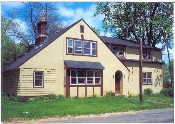 | | BEGINNINGS: A significant event in Bonnie Brae's history occurred on April 6, 1918 at the Robert Treat Hotel in Newark when $10,000 was raised in one day for the "Bonnie Brae Farm for Homeless Boys." Judge Osborne spoke, as did Canon Elmendorf, who contrasted the lives of boys on the Farm with their home environment. The first cottage, Kiwanis (left), was likely built in 1923 and dedicated in 1924 (click on the picture for a larger view). Do you recall the swings behind Kiwanis? Unfortunately, the Kiwanis Club of Newark disbanded a few years ago, and no longer has any records.
|
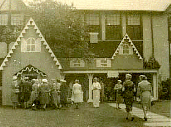 | | BRIDGE: The primary group activity Bonnie Brae used for financial support was the annual Bridge Party, a long tradition started in 1923. Held during two days in the Spring, mostly women came and sat at card tables in the gym and elsewhere to play bridge while we acted as waiters and parked cars. Each year displayed a different theme, and, for example, on May 19th and 20th, 1958 the theme, shown here, was the Gay Nineties. Some staffed dressed for the occasion, as did some boys, who looked forward to typically generous tips.
|
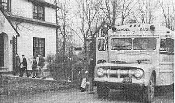 | | BB BUS: The Bonnie Brae bus was every kid's pride, not only because it took us to school and back, but more importantly it took us to lots of places like roller skating and the shore (see Excursions below). The BB Bus looked like any ordinary school bus, but we believed it was the fastest bus in the County, and on occasions Walt Parks, the bus driver, would "floor it" to squeak past another school bus on one of the narrow two-lane country roads to or from Basking Ridge or Bernardsville while all of us cheered him on. Rumor had it that the 55 mph governor was "broken."
|
BUTT SHACK: Smoking was common at BB among the staff and some of the older boys, who saw them as role models. About 1955 a three sided wood smoking shack, with one bench, was built between Pauls and Metcalfe Cottages, and it was used rain or shine, snow or sleet. It was not uncommon for boys to "roll" their own cigarettes, with or without a machine. On July 1, 1997 Bonnie Brae became entirely smoke-free. |
 | | CLOTHING: Bonnie Brae provided all of our clothing, but the "State" boys seemed to get better clothing. Almost all of it was second hand but in good shape. When any boy needed clothing he went to the second floor of the Administration Building, which held racks and racks of shirts, pants, jackets, etc. Of course, those parents who could afford clothing provided it to their child(ren), and we could always buy what we wanted, usually only a concern of those in high school. Although Mrs. Benscoter, the clothing guardian, was great with the sewing machine, shoes typically were a problem, and at times some boys "flapped" the soles of their shoes as they walked.
|
 | | COTTAGES: In the early 1950s there were four cottages, Osborne, Kiwanis, Gould, and Pauls (in order), named after their benefactor. All but Kiwanis, the first cottage, displayed an attractive Tudor exterior, and all were two-storied with a basement. Another cottage, Metcalf, of brick design, was built in 1955. Each lower floor consisted of a large living room, with TV, couch(s), a play or recreation/study room, a locker room, and a large bathroom room with showers. Upstairs, four or five bedrooms each contained from four to six steel beds. Nothing accessible to the boys was locked, and thus we quickly developed an honor system and trust. Each house parent had access to mini-apartment rooms both upstairs and downstairs, including a small kitchen where they often fixed snacks.
|
CHRISTMAS: The holidays always were special. Almost all of the boys left, by car, train, or bus to go home. Before that, each boy was allowed to request three gift items in the $5.00 range. Almost always he received one of them in a ceremony near one or two large well-lit tree(s). Sleds and skates were typical requests. It was not uncommon for a group of kids, led by an innovative house parent, to visit homes in the community singing Christmas Carols, or to go on a horse drawn "sleigh" ride. House parents and most staff left too. On occasion, some boys were put temporarily into an orphanage during that time. But given that the animals had to be fed, and other administration was necessary, a small contingent remained. |
DIRECTORS: Being the director of a 365 acre farm with approximately 90 boys aged 7 to 18 is no simple task. In the early 1940s Mrs. Berresford was the Superintendant, followed by Mr. Fraser. Long time staff member Charles Group, became director in 1941, but had little control, which was vested in the Board of Directors. At that time, the mix of undisciplined and typical boys was wide. Warren W. Watters assumed leadership in 1953 with the proviso that he could remove boys for serious discipline behavior, and shortly thereafter Bonnie Brae became more hospitable. A few years later, Fred Persiko (1956-67) brought innovation and harmony to the staff, and he was followed by Mr. Loftis. In 1970 Robert E. Kneebone was the Director. Other names include Peter Kurtz, Ronald Rutkowski, Ruth Walsh, and more recently Dr. Susan G. Roth. The
current CEO is William M. Powers, MHA, MPA. |
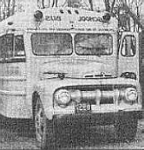 | | EXCURSIONS: Weekend or summer trips by bus, for example to the Florham Park roller skating rink, the seashore, or Drew and Madison Universities were popular. Favorites included Palisades Amusement Park, Bertrands Island in Lake Hopatcong, and football games at Princeton. Yes we sang on the bus; remember “100 Bottles of Beer on the Wall?”
|
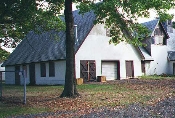 | | FARM WORK: The Farm contained one horse, about 35 milking cows, 30 sheep, a small herd of black Angus, pigs, and chickens, all of which required daily tending and were used for food. Although the Farm employed full time resident and non-resident workers, many of the tasks, such as collecting eggs, milking the cows twice daily and feeding them from two huge (to us) silos, feeding the pigs, sheep, etc. fell to the older boys. Everyone worked according to his ability. Each summer the freshly cut and bailed hay, and then straw, had to be loaded onto a flatbed truck for storage in the barn, which tended to keep us both well tanned and in excellent physical shape.
|
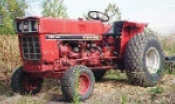 | | GARDENING: Optionally, each boy was given a small plot of land for planting in the early summer. About a fifth of the boys took that initiative. Watermelon was very common, but so were other melons, pole beans, squash, tomatoes, cucumbers, and the like. Occasionally someone would also plant flowers in some sort of design. There is little that tastes as good as a fresh picked cucumber right after a game of baseball. Sometimes the gardens were "raided" late at night, but surprisingly not that often.
|
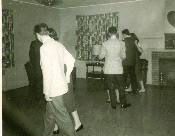 | | GIRLS There were no girls on BB, but that doesn't mean they weren't on our minds. Dances, both at Bonnie Brae or at local schools were popular with the older boys, and thus the record player got lots of use. In the mid to late 1950s some of us practiced the jitterbug dance with friends because it was taught nowhere else. Here is a picture of a dance in Pauls or Metcalf on Valentine's Day, 1958. It is surprising today how many boy girl friendships survived 30, 40, or more years despite not having seen each other since way back when. |
HOUSE PARENTS: Remember the Acken's, Mrs. Adams, the Barbers and the Benscoter's, Mrs. Bradley, Doug and June Dickinson, Nike Dodd, Mrs. Dunlap, Mr. and Mrs. Enoss, Mrs. Ford, the Greens, Mrs. Heinberger, Bob and Kay Hickethier, the Hydock's and the Lameroux's, Motts, Muellers, Orlandis, Pearce's, Philpotts, Rhodas, Mrs. Segine, Bob Seracino, the Sliker's, Strong's, and Gregg Whiteside. Who else? Each of the cottages was supervised by live-in houseparents, in addition to one relief house parent who rotated among the cottages for vacations and time off. We generally liked that relief time because it meant someone less familiar with the rules.
|
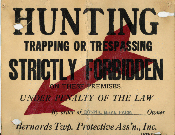 | | HUNTING: Much of Bonnie Brae's 365 acres were wooded, and those who ventured out saw everything from large cranes to deer and humming birds. Some of the older boys owned or used .22 caliber rifles and shotguns to hunt for rabbit, squirrel, etc. which were cooked and eaten. More importantly, we learned gun safety, and some of us earned marksmanship medals. Nevertheless, our property was off limits to others, as shown in this sign that was posted in the late 1950s. We also learned to trap.
|
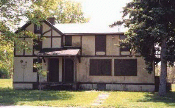 | | INFIRMARY: Illness visits everyone, and Mrs. Probosco, a large, caring, yet no nonsense woman, served as our resident nurse. We quickly learned that one or two days in the spotless yet stark, humorless, and dull Infirmary was enough to avoid any future consideration of faking illness. Later Mrs. Sweetman became the nurse. Given that, and our very healthy food and exercise, mostly the Infirmary remained empty.
|
 | | JOBS: Every boy had a job in addition to his morning cottage chores. Here some boys are feeding the cows (click on the picture for a much larger image). But other kinds of work needing doing too, such as collecting eggs, feeding other animals, grounds, hoeing and planting, Infirmary work, painting inside and out, pigpens, raking leaves, trash pickup, waiting on tables, wax and buff floors, window repair, wood or electrical shop work, etc. On a farm, there is always something that needs doing.
|
 | | JUSTICE: Two kinds of justice coexisted at Bonnie Brae. The staff administered a traditional kind that included extra work, being restricted on weekends, loss of snacks, etc. In the early days, corporal punishment was not uncommon. Yet the older and stronger boys maintained their own code of justice that ranged from teasing and fighting, to blanket parties, kangaroo court, or worse. Fights, often spontaneous, took place anywhere, but mostly moved to the woods behind each of the cottages. Quickly everyone learned his place, and friendships were critical. Each year some boys left and another, usually younger group, arrived, and had to learn the system.
|
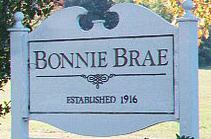 | |
LINKS:
|
 | | LOCATION: Geographically, Bonnie Brae is located at 40 ° 39' 34" N and 74 ° 33' 44" W as seen at the left in this 1981 satellite photo stored on the Microsoft TerraServer. Click on the picture for a larger image that shows Valley Road, Bonnie Brae buildings, the Dead River, and our famous pool. Liberty Corner can be seen in the upper left. Here is a more recent satellite image:
Google Image |
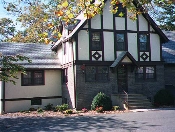 | | MEALS: One of the seldom recognized treasures at Bonnie Brae was the three meals served daily. The Dining Hall contained 12 tables, and one table for the Director up front near the huge fireplace. Each table seated one or two staff and six or seven boys about the same age. Before each meal we bowed our heads and said Grace in unison: "For our lives, our health, our food, our Father we thank thee. Amen." Although we joked about the meal pattern (e.g., mashed potatoes, stewed tomatoes and fish sticks on Fridays and spaghetti on Saturdays), seldom did anyone miss a meal. The favorite meal, Sunday morning, included donuts, but occasionally they were traded (promised) during the week for favors. "Seconds" were common, and collectively we consumed enormous amounts of milk, potatoes, vegetables, meat, fruit, etc.
Typical breakfasts consisted of fruit or fruit juice, hot or cold cereal, eggs, bacon or sausage, or hot cakes or waffles. Recall the large steel pitchers of hot coco each morning?
|
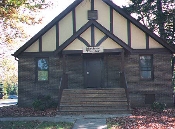 | | MOVIES: Movies were shown either in the Dining Hall or in the new Administration Building after it was built. Recall any of these: Fort Apache, or She Wore a Yellow Ribbon, two John Wayne flicks, as well as South of the Border (Gene Autry. 1939), The Man in the Iron Mask (Louis Hayward, 1939), and The Corsican brothers. Unlike today's video stores and VCRs, the two-reel movies we saw were years, perhaps decades, old. Mostly we loved the action movies and hated (or pretended to hate) the "mushy love stuff."
|
NICKNAMES: Not everyone had a nickname, yet there is no accounting for why. Here is a selected list of nicknames that every boy knew in his own time: Ace, Al, Bags, Biggy, Block, Bob, Bogota, Bucky, Bugs, Butch, Chucky, Ducky, Dugans, Doc, Fat Boy, Fish, Frog, Geezil, Gip, Goat, Governor, Herky, Hicky, High Waters, Hoagy, Ike, Jimbo, Jocko, Joe Bags, JoJo, Limey, Lindy, Lucky, Meatloaf, Monk, Mouse, Muff, Muffin, Mumbles, Ned, Ozzie, Penguin, Peachy, Popeye, Porky, Puny, Rat, Red, Romeo, Snag, Soxhead, Spanky, Sweetpea, Thumper, ToJo, Tucky, Wimpy, Wreck, Wreckage (Wreck's younger brother), and YoYo.
|
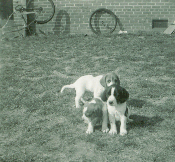 | | PETS: Pets at Bonnie Brae Farm were exceptionally rare, for obvious reasons. A good example is the Mynah bird donated to BB in 1958, and given to the Philpotts to take care of. Another rare occasion occurred in February, 1957 when "Terry" moved in behind Metcalf cottage. She use to run after the school bus. Terry had three pups on March 9th, and here is a picture of Terry's three pups behind Metcalf cottage.
|
RASCALS Remember Spanky and Alfalfa in the movie "Little Rascals?" Even Disney produced a movie titled "Rascals." Such boys, some better, some worse, lived at BB too. Each of us can recall a few times when mischief and monkey business got the upper hand, and we pulled some prank or practical joke on friend or foe. We learned much about life during those years. |
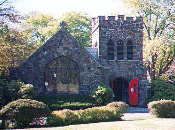 | | RELIGION: On alternate Sunday mornings after breakfast half of us donned our best clothes, usually a suit, and loaded into the bus for the nearby All Saints Episcopal Church in Millington New Jersey. Early on there was Reverend Hoofnagel in the 1930s & 1940s. Later, Reverend (eventually Bishop) Rath (1950s & 1960s), provided the sermons, generally a solemn affair that included about four songs. Everyone who attended, and most did, was given a small packet with coins for the offering.
|
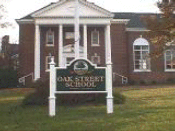 | | SCHOOLS: Every boy went to schools somewhere. In 1925 the boys walked to school in Liberty Corner. Later, boys went to Bernards Grammar until Oak Street was build. In the 1950s, a small number took classes at Bonnie Brae, whereas most of us attended either Oak Street Elementary School in Basking Ridge or Bernards High School, or both. This is a picture of Oak Street Elementary School. In the 1960s Ridge High School opened and boys went there.
|
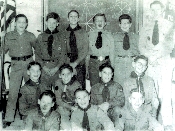 | | BOY SCOUTS: According to this site, the original BB Boy Scout Troop 55 is now located in another part of New Jersey. At one time it supported the best interests of Bonnie Brae boys who learned much from interaction with other troops, both on the BB camp grounds and at Lake Hopatcong. Here is a picture of Troop 55 taken about 1955 when Ike (on the right) served as Troop Leader. Click on the picture and see how many boy's names you recognize.
|
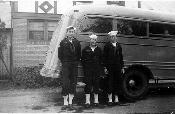 | | SEA SCOUTS: Sea Scouts was popular in 1949. Click on the picture for a larger view, and then note the boys in the bus too. Meetings were held in the old gym in an area cordoned off with ropes, to represent the bow of a ship. We "boarded" by saluting "the Skipper," and the colors. The skipper took us all up near the Delaware Water Gap where some canoes were rented and we had a great day canoeing, A few of us took a cruise from the Raritan River, where the boat was berthed, to Mystic Connecticut, learning the basics of navigation, ship handling,
cooking and cleanliness, arriving and spending a night at the US Coast Guard Station across the river from the USNA. What a thrill!! Then on to Mystic and all the historic areas at that monument. Click here to view a picture of the Bonnie Brae Sea Scouts in the Summer of 1949. Gordon Danelli is in front, and then left to right:
George Jessup, Jr., Unknown, Ackerman, Bill Applegate, Ed Outcalt/Pecci, Arnie Francisco, Emanuel, and Chuck Abrams. Photo courtesy of Ed.
|
SLANG: Each time and place has its own slang, and we were no exception. For example, "wackies" was a common word meaning that if you called it before anyone else, you obtained first rights to whatever you mentioned, provided it did not have a rightful owner. A good example was seating in the living room for TV. Other slang words included "chickee" to signal the approach of authority, and "hunkies" to claim a share of someone else's personal food, unless that person said "no hunkies" first.
|
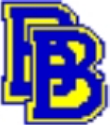 | | SPORTS: Although we attended a public high school, most of the boys had little academic interests. Yet, we could compete in sports, and many BB boys played varsity baseball, football and track. In addition, Bonnie Brae hosted teams that played both intramural and against local teams. The Administration building housed a fine basketball court where some of us spent many hours each week. Remember Coaches Dente, Dunn, and John Hendershot? Later, sports were directed by Mr. Casanova and Mr. Rakowsky. Bonnie Brae's large outdoor swimming pool was opened three times a day each summer. We also learned archery, horse shoes, tumbling, ping pong, and endless children's games like mumblety-peg.
|
STAFF: Over the years, staff changed. Mrs. Day and Mrs. Frolich served as caring social workers. Leo Elias mastered the skill of giving unconditionally. Bill Gundle, the heavily accented German, served as handy man, and must have earned his place in heaven putting up with some of us after WWII. "Pop" Taylor and Mr. Graham (the farming manager), whose innovations in machinery earned everyone's respect, taught us much. Later Mr. Hydock and Mr. Kingsman managed the farming. Walt Parks managed the buildings, and his wife worked at the nearby VA hospital. Mr. Ackens also helped on occasion, (his wife Frances taught math at Oak Street School). Sometimes boys returned as staff, and Ike Keay and Bob West are great examples. There are too many names to mention here.
|
Woman's Auxiliary: Shortly after the Bonnie Brae Farm Board of Directors was formed in 1915, Judge Osborne asked Mrs. Walton J. Graft
to form a committee to decorate the dining room. This Dining Room Committee, as it was to become known, accomplished innumerable tasks and events, such as painting, making curtains, and raising funds. In 1955 the group reformed and became known as the Bonnie Brae Auxiliary. Mrs. Edward F. James, Mrs. Arthur W. Herrmann, and Mrs. Frank L. Sundstrom wrote their constitution. "The objective of the Auxiliary was to supply as many services to the Farm as possible, such as: volunteers to transport children to doctors and clinics; to plan and execute trips and outings, especially for those boys who have no visitors; educational field trips; programs to develop talents, arts, crafts, and music; library; decorations and upkeep of cottages." These unsung heroines contributed substantially to each Bonnie Brae boy for more than six decades. |
|























